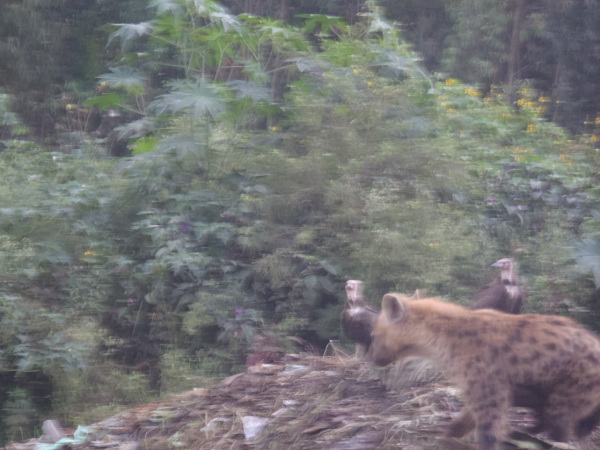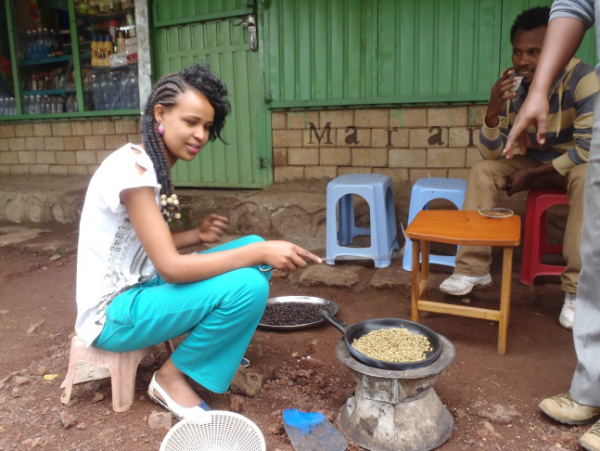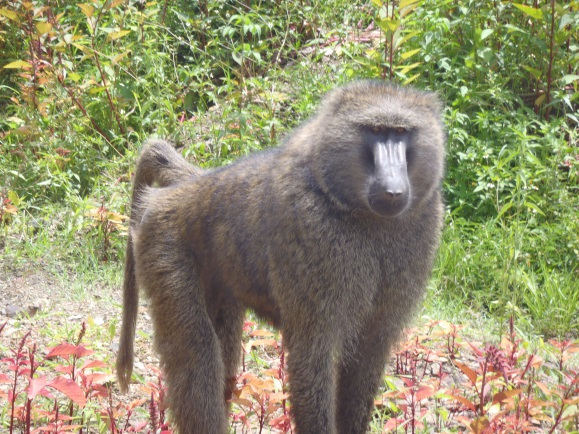
Volunteer Post
Bees, Coffee and Other Adventures in Ethiopia
Stephen Peterson
Thank you to volunteer Stephen Peterson for his blog entry from his recent assignment in Ethiopia! (Read below):
August 2013
Ethiopia, and specifically the Kaffe district in the SW, is the genetic home to Coffea arabica colloquially known, at home, as a “cuppa joe”. I learned a bit about beekeeping (local bees are VERY aggressive), a little about coffee and saw some incredible scenery. It’s the rainy season now and, other than lots of mud, no problem at all – except there are few flowers and honey stores are low; both of which increase the aggressive nature of the bees. I brought a full bee suit but nobody here had one and nobody would, or let me, open a beehive. Regardless I got stung twice, much to the amusement of the flock of kids that accompanied us to the apiary, once on the end of the nose (instant sinus decongestion) and another atop the head.
I gave five lecture/seminars while in Bonga, based on my observations on their weak points or, on what they mentioned the day before they’d like to learn more about. I had 47 participants (4 women 43 men).
I asked the group, “How many of you have actually seen bee eggs?” Two hands were raised; so bee biology was put on the list of subjects to be covered. This is where the coffee comes in –
The local “forest coffee” is picked wild in the surrounding forest off of trees; yes, I too was surprised, but they grow 4-5 meters tall (12-15 feet for you non-metrics). It is sun dried; then the pulp washed off leaving “green” beans which store longer than roasted. The coffee is roasted as demand warrants; culture dictates three demitasse-sized cups should be taken – believe me each one is the caffeine equivalent of a triple espresso.

[Later], as we meandered along the well-paved road SW to Jimma and Bonga, Endeshaw, my excellent colleague and translator was able to answer every question I had (and I was full of them).“What are they selling?”, I asked as we passed young boys along the road holding the arms apart as if to indicate, “I caught a fish this big!” “Charcoal”, Endeshaw replied, I guess just the gesture was better than holding up a bunch of carbonized sticks. Almost everybody (91 million people) cooks on wood! We did see wildlife– some roadside Olive baboons (Papio anubus – named after the Egyptian god Anubis) who looked like furry gangsters, some beautiful white-tail and mane colobus monkeys (Colobus guereza) who seem to be well adapted to disturbed environments, and the real scary looking hyenas (Crocuta crocuta). Evidently they are not commonly seen in daylight hours as it was the first time any of the 3 locals with me had seen them during daylight. They quickly scattered back into the bushes when we stopped for photos.


In Ethiopia, with about a 2.5% population growth annually, there is tremendous pressure on the remaining virgin forests (I had a mental picture of Ethiopia as a marginal desert environment – wrong!) through clearing for agriculture, charcoal production and logging – in about that order. I have a mantra I picked up in Cambodia: “No forest no bees (a concept, which everybody seems to grasp)” but the corollary “No bees no forest” is a bit more difficult to swallow (even educated Westerners struggle with the concept of bees beneficiating the environment). Bees, being a keystone species, are vital to the health of the forest; Ethiopia claims to have on the order of 5.15 million colonies wild and “managed,” and over one million households have bees.
Fellow Farmer-to-Farmer volunteer Jerry and I went out to a cultural restaurant for his last night here and shared a bottle of tej [local honey wine]. My souvenir tej is coming home in a recycled water bottle- if it makes it in the luggage. Also on the souvenir list is 2 kg of local honey (finely crystallized), some beeswax, 2 kg of forest coffee and a cool knit cap for my granddaughter.
